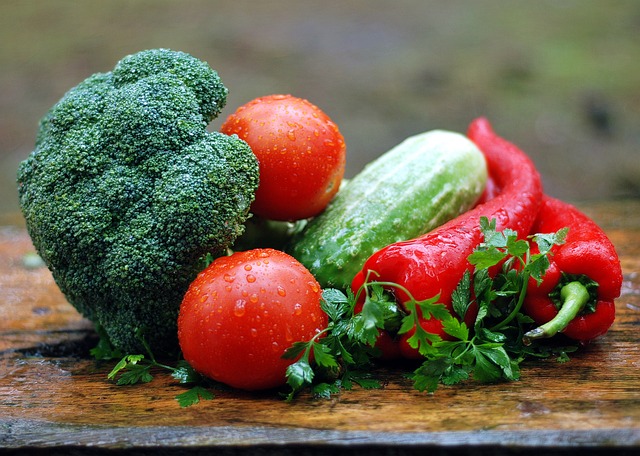Local food delivery and meal preparation services have transformed how individuals approach daily meals by offering a convenient, fresh, and sustainable option that supports the local economy. These platforms provide access to locally-sourced ingredients, reducing food waste and carbon emissions associated with long-distance transportation. They cater to various needs, from busy professionals and families to students, offering customizable meal kits and menus that align with individual dietary requirements and nutritional goals. The integration of advanced technology allows for personalized meal plans, enabling users to maintain a consistent and healthy eating routine with minimal effort. These services not only enhance the taste and quality of meals but also promote environmental health through sustainable practices. As such, local food delivery and meal preparation have become indispensable in modern life, offering a balanced solution that combines convenience with dietary health and economic support for the community.
In today’s fast-paced world, where schedules are packed and time is precious, the intersection of fresh food delivery and meal preparation has become a cornerstone of modern living. “Fresh Food Delivery for Busy Lives” explores this dynamic convergence, offering insights into how local food delivery services are transforming the way we eat and manage our nutrition. The article delves into “Embracing Efficiency: The Role of Local Food Delivery in Modern Living,” highlighting the seamless integration of fresh produce and groceries into our hectic routines. Moving forward, it examines “Streamlining Nutrition: Benefits and Strategies for Meal Preparation with Fresh Ingredients,” providing practical advice on how to maintain a balanced diet without sacrificing time. Finally, “Customizing Convenience: Personalized Meal Plans and Subscription Services for the Busy Individual” showcases the tailored solutions available, ensuring that healthy eating aligns seamlessly with our personal lifestyles. Join us as we navigate the contemporary culinary landscape where local food delivery meets meal preparation, offering a world of convenience and nutritional benefits right at your doorstep.
- Embracing Efficiency: The Role of Local Food Delivery in Modern Living
- Streamlining Nutrition: Benefits and Strategies for Meal Preparation with Fresh Ingredients
- Customizing Convenience: Personalized Meal Plans and Subscription Services for the Busy Individual
Embracing Efficiency: The Role of Local Food Delivery in Modern Living

In the fast-paced rhythm of modern living, where time is a precious commodity, local food delivery services have become a cornerstone of efficient meal planning and preparation. These services not only offer convenience but also ensure that individuals can savor fresh, locally-sourced ingredients without the need to navigate crowded grocery aisles or spend hours in kitchen preparation. By partnering with local farmers and producers, these platforms provide customers with an array of farm-to-table options, reducing food miles and supporting the local economy. The role of local food delivery in modern living is multifaceted; it caters to the busy schedules of professionals, families, and students alike, delivering nutritious meals that align with personal dietary needs and preferences. Moreover, these services often offer meal kits or pre-planned menus, which streamline the process of meal preparation, allowing individuals to allocate their time and energy towards other priorities. The efficiency and sustainability offered by local food delivery systems make them an indispensable tool for those striving to maintain a balanced diet amidst a demanding lifestyle.
Streamlining Nutrition: Benefits and Strategies for Meal Preparation with Fresh Ingredients

In today’s fast-paced world, where schedules are packed and time is a precious commodity, maintaining a balanced diet can be a challenge. Enter the realm of local food delivery services that bring fresh ingredients directly to your doorstep, revolutionizing meal preparation for busy individuals. These services not only enhance convenience but also offer significant nutritional benefits by ensuring meals are made with the freshest produce available. By opting for local food delivery, consumers can access a variety of seasonal and regional specialties, which often contain more nutrients than their conventionally grown counterparts due to the shorter time between harvest and consumption. This proximity also means a smaller carbon footprint, supporting sustainable practices and contributing to the health of both the community and the environment.
Strategies for meal preparation with fresh ingredients delivered locally are abundant and tailored to fit various dietary needs and preferences. For instance, planning meals around the delivery schedule can help integrate these fresh components into a balanced diet seamlessly. Additionally, subscription models that offer customizable menu options allow individuals to select their preferred meals, ensuring a diversity of nutrients throughout the week. The key lies in leveraging these services to complement a healthy lifestyle, whether it’s through meal kits that include all the necessary ingredients and recipes or pre-prepared meals ready for quick reheating. By doing so, busy individuals can streamline their nutrition without compromising on taste or quality, making local food delivery a compelling option for those looking to maintain their health effortlessly amidst a hectic schedule.
Customizing Convenience: Personalized Meal Plans and Subscription Services for the Busy Individual

In today’s fast-paced world, where time is a precious commodity for many, the rise of customized convenience through local food delivery and meal preparation services has been transformative for busy individuals. These innovative services offer personalized meal plans tailored to individual dietary preferences, nutritional goals, and schedule demands. By leveraging technology, these platforms allow users to select their favorite meals from a variety of options provided by local restaurants and farms, ensuring that each delivery is not just convenient but also aligned with one’s culinary tastes and health objectives. The integration of subscription models in meal planning provides a consistent routine for those who prioritize healthy eating amidst their hectic lifestyles. This level of customization and convenience removes the hassle of grocery shopping, meal planning, and preparation, freeing up valuable time for individuals to focus on other aspects of their lives without compromising on the quality or variety of their diets.
The advantages of local food delivery and meal preparation services extend beyond mere convenience; they also promote a more sustainable approach to eating by reducing the carbon footprint associated with long-distance transportation of food items. By supporting local producers, consumers are not only enjoying fresh, nutritious meals but also contributing to the vibrancy of their local economies. These services often feature seasonal and locally sourced ingredients, which not only taste better but also help in maintaining a diverse agricultural landscape. As such, they cater to the growing demand for food that is as good for the environment as it is for one’s personal well-being. Busy individuals can now enjoy the luxury of tailor-made meals delivered right to their doorstep, making it an indispensable component of modern life.
In conclusion, the integration of local food delivery services into our daily routines represents a significant step towards maintaining both efficiency and nutrition in our busy lives. By leveraging these services for meal preparation, individuals can customize their diets to suit personal health goals, save time previously spent on grocery shopping and cooking, and support local economies. The future of food is one where convenience and nourishment coalesce, offering a multitude of options that cater to the varying demands of modern lifestyles. Embracing local food delivery for fresh meal preparations not only simplifies the complex logistics of daily sustenance but also promotes a healthier community and environment. As such, it is clear that these services are more than just a passing trend; they are a transformative component of our evolving relationship with food.



